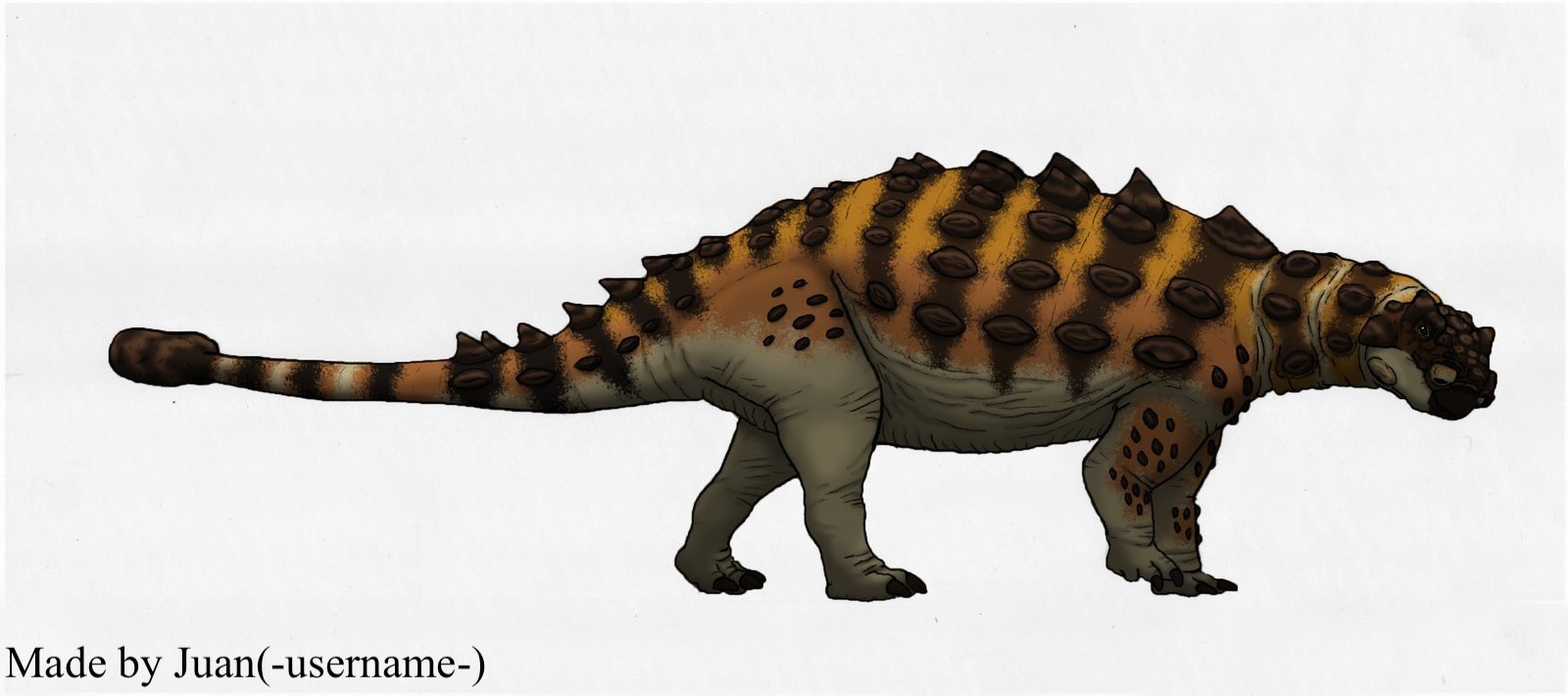Welcome to Akainacephalus

Name Definition
Spike head
Name Given By
Jelle P. Wiersma and Randall B. Irmis in 2018
Location
Kaiparowits Formation in southern Utah, U.S.
Classification
Dinosauria, Ornithischia, Thyreophora, Ankylosauria, Ankylosauridae, Ankylosaurinae, Ankylosaurini
Size
about 1.6 - 2 meters tall, 3.8 - 4 meters long
Temporal Range
Campanian stage of the late Cretaceous, about 76 million years ago
Ecological niche
Armored herbivore
Species/Sub Species
A. johnsoni
Diet
Like other ankylosaurs, Akainacephalus would have been adept at stripping plant matter from low lying plants
Introduction
Akainacephalus is a genus of ankylosaurid dinosaurs that lived in Utah during the late Cretaceous. Akainacephalus means “spike head” in Greek which is a reference to spiky head armor that is present on its head. The species name honors Randy Johnson who was a preparator for the well-preserved skeleton. During the late Cretaceous, the continent that was North America as we know it today was split in half by the Western Interior Seaway since this seaway submerged the middle part of North America. Because of this, there were only two remaining landmasses during this time from North America, Laramidia (west) and Appalachia (east). Luckily, Utah, where Akainacephalus lived at the time, was not submerged by seawater and was located in the southern half of Laramidia. Akainacephalus is the best-preserved ankylosaurid known from this region, but that doesn’t mean it was the only one. Nodocephalosaurus, another ankylosaurid, was found in New Mexico which is also partially part of southern Laramidia, and it presumably lived in the small portion of southwestern New Mexico where it wasn’t submerged, while the rest of New Mexico was. While these two have been noted to have similar skull structures, scientists believe Akainacephalus is still a different genus from Nodocephalosaurus since testing their cranial elements has suggested otherwise. To add to this, it is also noted that ankylosaurids like Akainacephalus and Nodocephalosaurus have cranial elements similar to Asian ankylosaurids like Tarchia, most likely because of the relatively spiky head armor. This supports the theory of dinosaur species radiation between Asia and North America, and it isn’t just ankylosaurids, since this is also happening with tyrannosaurus, dromaeosaurs, hadrosaurs, ceratopsians, and ornithomimosaurs, all of which are common late Cretaceous paleofauna and are also known during the same periods. Akainacephalus is known from the Kaiparowits Formation and lived with typical Cretaceous paleofauna. Akainacephalus coexisted with turtles, neosuchians including Deinosuchus and Benissartia, a variety of ornithischians including late Cretaceous hadrosaurs and ceratopsians as well as another nodosaurid, and several genera of maniraptorans as well as the enantiornithine bird Mirarce eatoni, an indeterminate ornithomimid, and the apex predator/tyrannosaurid Teratophoneus curriei.